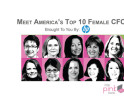
America’s Most Powerful Women in Education

When Harvard University’s fall semester starts, Drew Gilpin Faust, Ph.D., will be the first woman president at the nation’s oldest institution of higher learning. This also makes Harvard the fourth Ivy League school (out of eight) now run by a woman, marking an encouraging trend in higher education: an increase in highly qualified women presidents.
By Taylor Mallory
From 1986 to 2006, the proportion of women academic presidents in the U.S. more than doubled, from 10 percent to 23 percent, according to the American Council on Education (ACE). And these women are highly educated and career-focused. In fact, women presidents are more likely than their male counterparts to have a doctorate — 81 percent vs. 73 percent.
Though gender parity remains elusive, Claire Van Ummersen, Ph.D., vice president of the Center for Effective Leadership at the ACE, is optimistic. “We’ll see more women and minorities taking these positions in the future because they make up a greater percentage of the pipeline than ever before,” she explains. “And boards are beginning to look more favorably at them, partly because many women have been extremely successful presidents.”
PINK profiles eight women tasked with educating the nation’s finest:


This article originally appeared in the August.September 2007 issue of PINK Magazine.
Recommended
-
Fashion Trends: Four Tips For ...September 1st, 2018
-
Does A Professional Woman Real...August 31st, 2018
-
America’s Top 10 Female ...August 21st, 2013
-
Val DiFebo, CEO, Deutsch New Y...May 20th, 2013
-
Celebrating Black History Mont...May 20th, 2013














